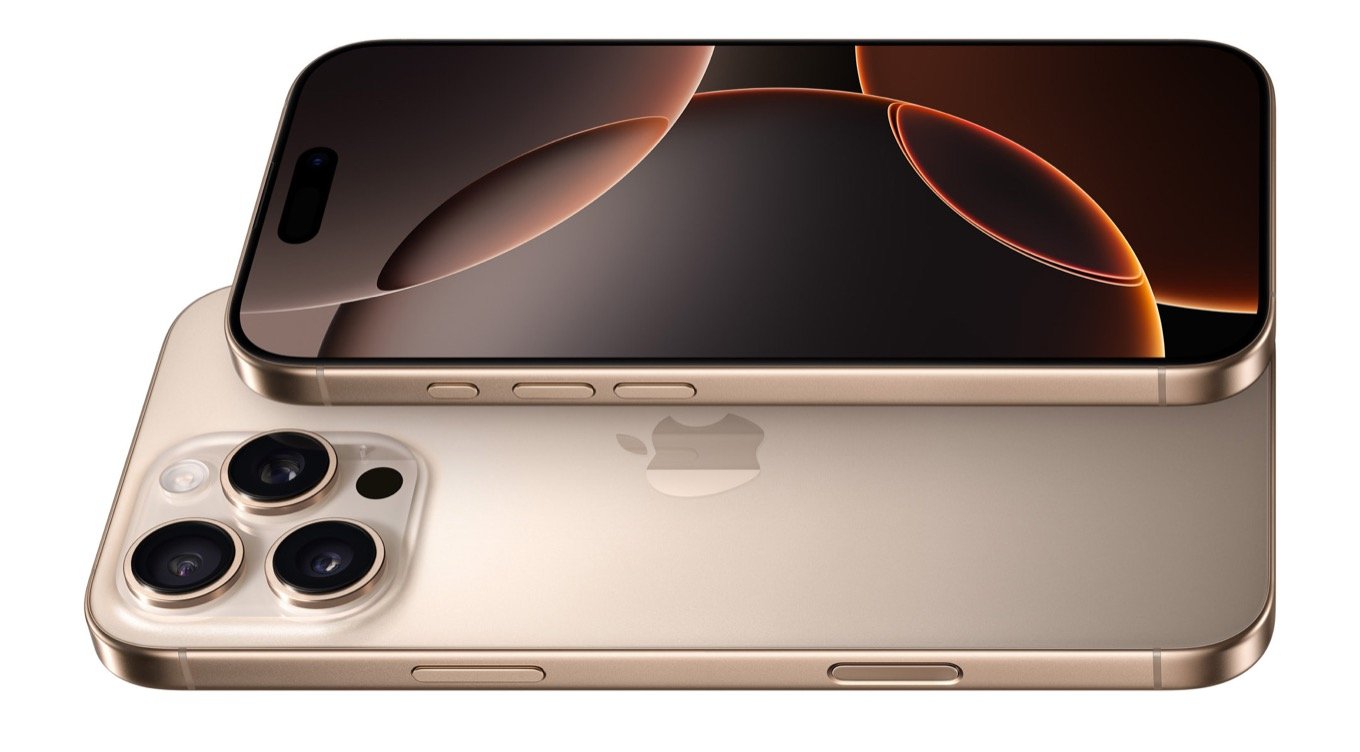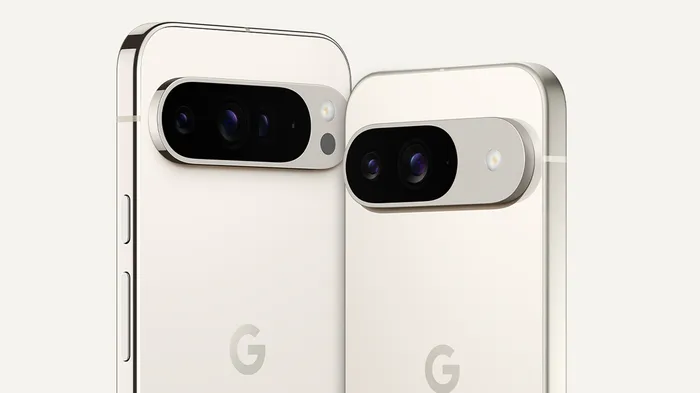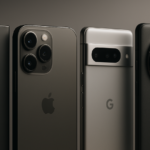Physical Address
304 North Cardinal St.
Dorchester Center, MA 02124

The first half of 2025 has delivered an exciting lineup of flagship smartphones that push the boundaries of what we thought possible in mobile technology. As manufacturers compete fiercely for market dominance, consumers are presented with increasingly sophisticated devices that blend cutting-edge hardware with advanced artificial intelligence.
In this comprehensive review, we’ll examine the four titans dominating the premium smartphone market: the Samsung Galaxy S25 Ultra, iPhone 16 Pro Max, Google Pixel 9 Pro, and OnePlus 13. Each device brings unique strengths to the table, from revolutionary AI capabilities to exceptional camera systems and unprecedented battery performance.
Whether you’re considering an upgrade or simply fascinated by the latest technological advancements, this deep dive will help you understand what makes each of these flagship devices special and which might best suit your needs and preferences.
Table of Contents
ToggleBefore we delve into detailed comparisons, let’s introduce our contenders:
Samsung Galaxy S25 Ultra: Samsung’s premium offering continues to push hardware boundaries while significantly upgrading its AI capabilities. With the powerful Snapdragon 8 Elite processor and advanced camera system, it aims to maintain Samsung’s position at the forefront of Android innovation.
iPhone 16 Pro Max: Apple’s flagship introduces a dedicated Camera Control button and focuses on refined performance with its A18 Pro chip. Battery life sees substantial improvements, and the device offers impressive 4K 120fps video capabilities.
Google Pixel 9 Pro: Google doubles down on AI integration with enhanced features powered by its Tensor G4 chip. The device boasts an exceptionally bright display and significantly improved battery performance compared to previous generations.
OnePlus 13: Positioned as the value champion among premium flagships, this device offers competitive performance, remarkable battery life, and impressive camera capabilities at a relatively lower price point.

The Galaxy S25 Ultra takes Samsung’s AI assistant to new heights with remarkably responsive and context-aware interactions. The improved AI agent can:
These AI features are deeply integrated throughout the phone’s operating system, making everyday tasks more intuitive and efficient.
Equipped with the Snapdragon 8 Elite processor, the S25 Ultra delivers:
The camera system continues to be a cornerstone of the S25 Ultra experience:
Despite its impressive features, the S25 Ultra has a few notable limitations:

The iPhone 16 Pro Max sets a new standard for battery endurance:
The dedicated Camera Control button transforms how users interact with the camera:
Video capabilities have taken a significant leap forward:
Despite these strengths, the iPhone 16 Pro Max has a few areas that could be enhanced:

Google continues to lead in practical AI applications:
The Pixel 9 Pro screen sets new standards for mobile displays:
After years of criticism regarding battery performance, Google has finally addressed this concern:
The Pixel 9 Pro isn’t without its compromises:

The OnePlus 13 demonstrates that flagship performance doesn’t require the highest price tag:
Battery performance is a standout feature of the OnePlus 13:
OnePlus has made significant strides in photography:
The OnePlus 13 represents exceptional value:
| Feature | Samsung Galaxy S25 Ultra | iPhone 16 Pro Max | Google Pixel 9 Pro | OnePlus 13 |
|---|---|---|---|---|
| Display | 6.9" Dynamic AMOLED 2X, 3088x1440, 1-120Hz | 6.7" Super Retina XDR, 2796x1290, 1-120Hz | 6.5" LTPO OLED, 2992x1344, 1-120Hz | 6.8" LTPO AMOLED, 3168x1440, 1-120Hz |
| Processor | Snapdragon 8 Elite | A18 Pro | Tensor G4 | Snapdragon 8 Elite |
| RAM | Up to 16GB | 8GB (estimated) | 16GB | Up to 16GB |
| Storage | 256GB/512GB/1TB | 256GB/512GB/1TB/2TB | 128GB/256GB/512GB | 256GB/512GB/1TB |
| Main Camera | 200MP, f/1.7 | 48MP, f/1.7 | 50MP, f/1.7 | 50MP, f/1.6 |
| Ultrawide | 50MP, f/2.2 | 48MP, f/2.2 | 48MP, f/1.8 | 48MP, f/2.2 |
| Telephoto | 10MP 3x optical + 50MP 5x optical | 12MP 5x optical | 48MP 5x optical | 64MP 3x optical |
| Front Camera | 40MP, f/2.2 | 12MP, f/1.9 | 10.8MP, f/2.2 | 32MP, f/2.4 |
| Battery | 5,000mAh | 4,422mAh (estimated) | 4,950mAh | 5,400mAh |
| Charging | 45W wired, 15W wireless | 27W wired, 15W MagSafe | 30W wired, 23W wireless | 100W wired, 50W wireless |
| Operating System | Android 15 (One UI 7.0) | iOS 18 | Android 15 | Android 15 (OxygenOS 15) |
| Special Features | S Pen, AI suite, IP68 | Camera Control button, Apple Intelligence, IP68 | Google AI, Circle to Search, IP68 | Alert slider, Hasselblad tuning, IP68 |
| Starting Price | $1,299 | $1,199 | $999 | $899 |
After thoroughly comparing these four remarkable devices, it’s clear that each has distinctive strengths that will appeal to different users:
For Photography Enthusiasts: The Samsung Galaxy S25 Ultra offers the most versatile camera system with its dual telephoto lenses and impressive 200MP main sensor. However, the iPhone 16 Pro Max’s Camera Control button and exceptional video capabilities make it a compelling alternative, especially for videographers.
For Battery Warriors: The OnePlus 13 stands out with its massive battery capacity and industry-leading charging speeds. The iPhone 16 Pro Max follows closely, offering exceptional battery life through software efficiency rather than sheer capacity.
For AI and Assistant Users: The Google Pixel 9 Pro delivers the most practical and useful AI integrations, with features that genuinely enhance daily use rather than serving as mere tech demos. Samsung’s comprehensive AI suite in the S25 Ultra comes in a close second.
For Power Users and Gamers: The Samsung Galaxy S25 Ultra and OnePlus 13, both powered by the Snapdragon 8 Elite, deliver exceptional performance for demanding tasks and graphically intensive games.
For Value Seekers: The OnePlus 13 offers the best balance of premium features and reasonable pricing, delivering a true flagship experience without the four-digit price tag.
Ultimately, your ideal smartphone depends on which aspects you prioritize. Consider what matters most in your daily usage—be it camera quality, battery life, processing power, or value—and choose accordingly. Each of these flagship devices represents the pinnacle of mobile technology in early 2025, and all will serve you well for years to come.

Subscribe to our weekly newsletter below and never miss the latest product or an exclusive offer.




